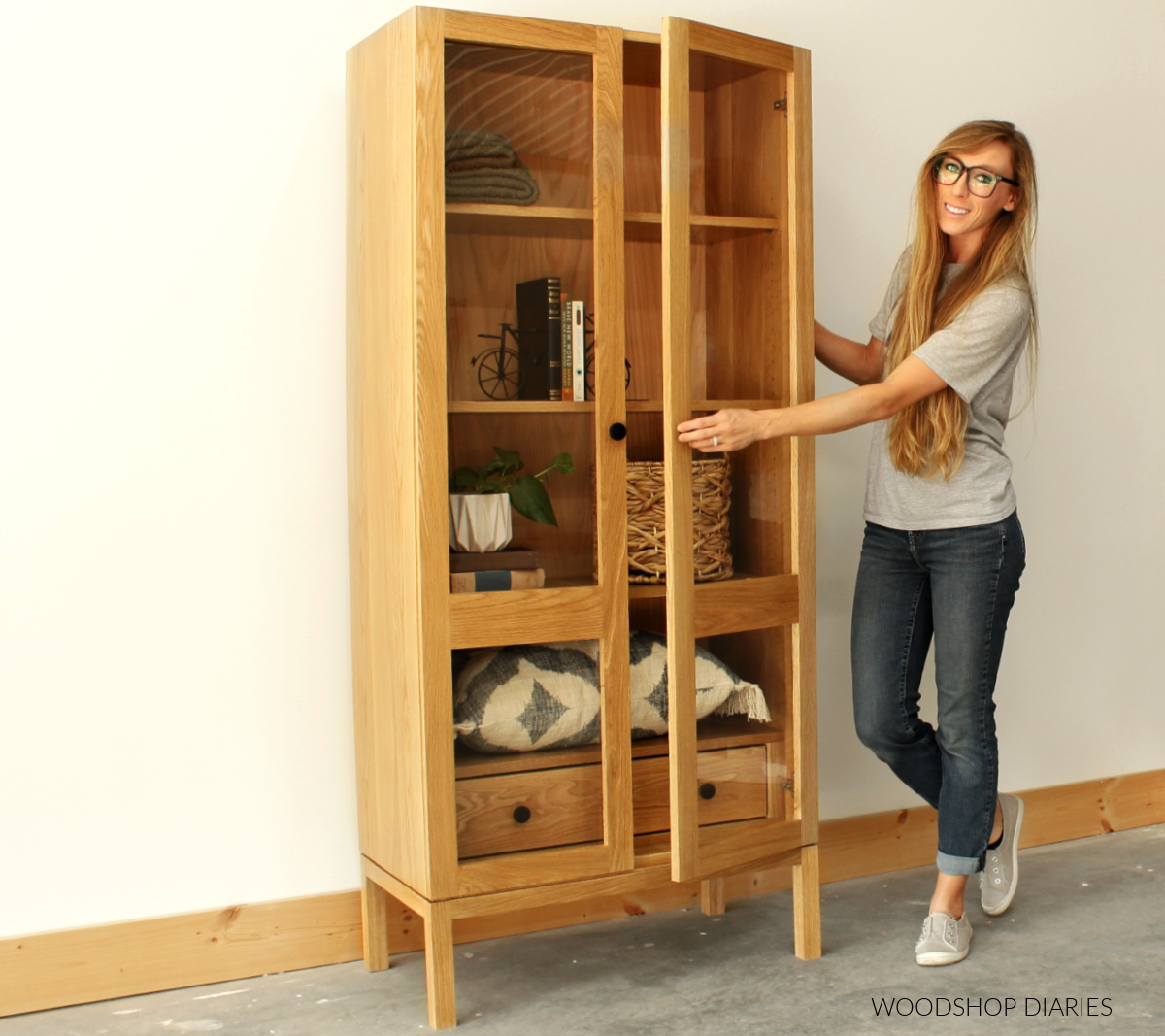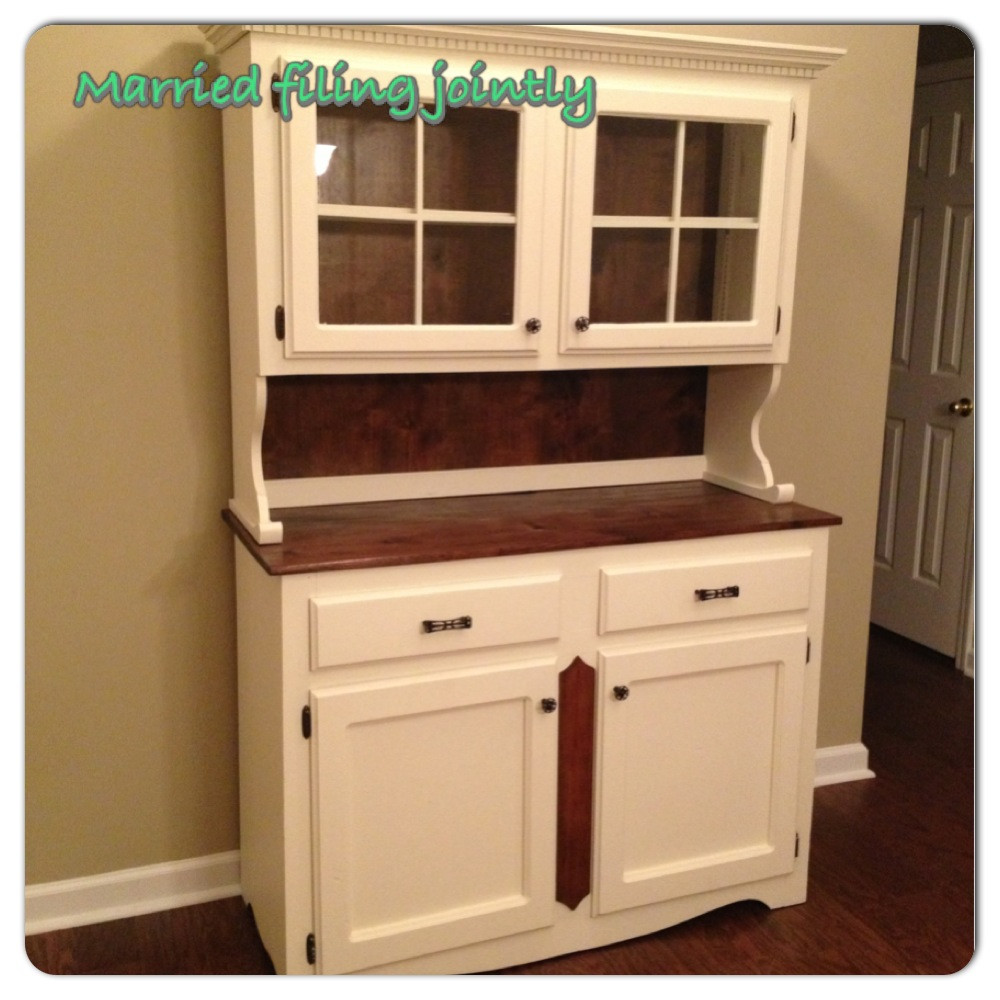Understanding Rustic Style and China Cabinet Design: Rustic China Cabinet Plans

Rustic style furniture, with its emphasis on natural materials and handcrafted details, brings a warm and inviting feel to any home. A china cabinet, a piece that showcases cherished dishes and glassware, is a perfect addition to a rustic setting, blending practicality with aesthetic appeal. This guide explores the defining characteristics of rustic style and delves into the design considerations for a rustic china cabinet, helping you create a unique and functional piece for your home.
Defining Rustic Style
Rustic style is characterized by its embrace of natural materials, distressed finishes, and handcrafted elements. This style draws inspiration from the simplicity and authenticity of rural life, celebrating the beauty of imperfections and the passage of time.
- Natural Materials: Rustic furniture often features wood, particularly reclaimed or weathered wood, which adds character and warmth to the design. Other natural materials like stone, metal, and leather are also frequently incorporated.
- Distressed Finishes: Distressed finishes, such as chipped paint, worn surfaces, and visible wood grain, contribute to the rustic aesthetic, suggesting a history and a sense of age.
- Handcrafted Elements: Rustic furniture often showcases handcrafted details, like hand-carved elements, hand-forged iron accents, and hand-painted designs. These elements add a personal touch and highlight the unique craftsmanship of the piece.
The Purpose and Function of a China Cabinet
A china cabinet serves as a functional storage solution and a decorative centerpiece for a dining room or kitchen. Its primary purpose is to display and protect fine china, glassware, and other treasured items.
- Display: The glass doors of a china cabinet allow for the showcasing of beautiful dishes, serving pieces, and other decorative items, adding elegance and personality to the room.
- Storage: The cabinet provides secure storage for fragile items, protecting them from dust, moisture, and accidental damage.
- Organization: Shelves and drawers within the cabinet offer organized storage for various items, keeping the kitchen or dining room tidy and efficient.
Rustic Design Elements for China Cabinets
Rustic china cabinets often incorporate unique design elements that enhance their aesthetic appeal and functionality. These elements can range from reclaimed wood and wrought iron accents to hand-painted details.
- Reclaimed Wood: Using reclaimed wood, such as salvaged barn wood or weathered beams, adds character and sustainability to the cabinet. The unique grain patterns and natural imperfections create a rustic charm.
- Wrought Iron Accents: Wrought iron accents, such as handles, hinges, and decorative elements, complement the rustic aesthetic. The handcrafted nature of wrought iron adds a touch of elegance and durability to the cabinet.
- Hand-Painted Details: Hand-painted details, such as floral motifs, landscapes, or personalized designs, add a unique touch to the cabinet. These details can reflect the owner’s personality and create a one-of-a-kind piece.
Types of Rustic China Cabinets, Rustic china cabinet plans
Rustic china cabinets come in various styles and designs, catering to different preferences and space requirements.
- Freestanding China Cabinets: These cabinets are independent pieces of furniture that can be placed anywhere in the room. They offer flexibility in placement and are suitable for both small and large spaces.
- Built-in China Cabinets: Built-in cabinets are integrated into the walls of the room, creating a seamless and space-saving solution. They are often custom-designed to fit specific dimensions and enhance the overall design of the room.
- Corner China Cabinets: Corner cabinets are designed to fit into a corner of the room, maximizing space and creating a focal point. They are ideal for smaller spaces or for adding a unique touch to a corner.
Planning and Designing Your Rustic China Cabinet

Planning and designing your rustic china cabinet is an exciting step in creating a unique piece of furniture that reflects your personal style and adds character to your home. This process involves careful consideration of various factors to ensure the final product meets your needs and complements your existing decor.
Determining Cabinet Size and Shape
The size and shape of your china cabinet should be determined by the space available in your dining room or kitchen and the amount of storage you require.
- Consider the dimensions of the room where the cabinet will be placed. Measure the available wall space, and leave enough clearance for doors to open and close easily.
- Determine the number of shelves and drawers you need to accommodate your china, glassware, and other items. A larger cabinet will provide more storage space but may require more room.
- Think about the overall shape of the cabinet. Traditional china cabinets are typically rectangular, but you can opt for a more unique shape like a curved front or a corner design to add visual interest.
Creating Detailed Sketches or Blueprints
Detailed sketches or blueprints are essential for visualizing your china cabinet design and ensuring accurate construction.
- Start by sketching out your ideas on paper, including the overall dimensions, the number and placement of shelves and drawers, and any decorative elements you want to incorporate.
- Use a ruler and pencil to create precise measurements and ensure all components are proportionally correct.
- If you are comfortable with computer-aided design (CAD) software, you can create a digital blueprint for greater accuracy and flexibility.
Choosing the Right Materials for a Rustic China Cabinet
The choice of materials for your rustic china cabinet will greatly influence its durability, aesthetic appeal, and sustainability.
- Consider using reclaimed wood, such as barn wood, for a truly rustic look and an environmentally friendly choice. Reclaimed wood adds character and history to the cabinet, while reducing waste and promoting sustainability.
- Other durable wood types commonly used for rustic furniture include oak, pine, and cedar. Oak is known for its strength and durability, pine offers a more affordable option with a softer grain, and cedar is naturally resistant to insects and decay.
- For hardware, choose rustic finishes like iron or brass to complement the wood and enhance the overall aesthetic.
Common Wood Types for Rustic Furniture
| Wood Type | Characteristics | Pros | Cons |
|---|---|---|---|
| Oak | Hardwood, strong, durable, grain pattern varies | Long-lasting, resistant to wear and tear, adds a classic touch | Can be expensive, requires proper finishing to prevent warping |
| Pine | Softwood, affordable, lightweight, easy to work with | Cost-effective, versatile, adds a rustic charm | Less durable than hardwood, prone to scratches and dents |
| Cedar | Softwood, aromatic, naturally resistant to insects and decay | Durable, repels pests, adds a pleasant aroma | Can be more expensive than pine, may require special finishing |
| Reclaimed Wood | Various types, unique grain patterns, adds character | Sustainable, eco-friendly, adds a rustic charm | Availability may be limited, requires careful cleaning and preparation |
Building a Rustic China Cabinet

Now that you have a design in mind, it’s time to get your hands dirty and bring your rustic china cabinet to life. Building a cabinet from scratch allows you to customize it perfectly to your needs and style. This section will guide you through the process, step by step, using various woodworking techniques and tools.
Cutting and Joining the Cabinet Pieces
The first step is to cut the wood for the cabinet’s frame, shelves, and doors. You’ll need a saw, preferably a table saw or circular saw, for precise cuts. A miter saw is helpful for making angled cuts for the frame. Measure carefully and mark your wood before cutting to ensure accuracy.
To join the pieces, you can use traditional joinery techniques like mortise and tenon joints or rabbet joints. These methods are strong and add to the rustic charm of the cabinet. If you prefer a simpler approach, you can use pocket hole joinery or glue and screws.
- Mortise and Tenon Joints: This technique involves cutting a rectangular hole (mortise) in one piece of wood and a corresponding protruding piece (tenon) on the other. The tenon fits snugly into the mortise, creating a strong and stable joint.
- Rabbet Joints: This method involves cutting a groove (rabbet) on the edge of one piece of wood and fitting the edge of another piece into the groove. Rabbet joints are often used for joining shelves to the cabinet sides.
- Pocket Hole Joinery: This technique uses a jig to drill angled holes on the edges of the wood. Screws are then driven into these holes, creating a strong and hidden joint.
- Glue and Screws: This is the simplest method, using glue to bond the wood pieces and screws for additional strength.
Assembling the Cabinet
Once you have cut and joined all the pieces, you can start assembling the cabinet. Begin by building the frame, using the joinery method you chose. Make sure the frame is square and level before moving on.
Next, attach the shelves to the frame. If you are using mortise and tenon joints, fit the tenons into the mortises and secure them with glue and screws. If you are using rabbet joints, fit the shelf edges into the rabbets and secure them with glue and screws.
Once the shelves are in place, you can attach the back panel. This can be done using glue and nails or screws.
Creating the Doors
For the doors, cut the wood to size and join the pieces using your chosen method. Once the door frames are complete, you can attach the glass panels. Use glazing points and putty to secure the glass in place.
Adding Hardware
Now it’s time to add the finishing touches. Install hinges on the doors and attach handles or knobs.
Distressing Techniques for a Rustic Look
A rustic china cabinet is all about achieving a weathered and aged look. Here are some techniques you can use to distress your cabinet:
- Sanding: Use sandpaper of varying grits to create a distressed look. Start with a coarser grit and work your way down to a finer grit. You can sand the edges, corners, and high points of the cabinet to create a worn and weathered appearance.
- Painting: Apply a base coat of paint and then use a dry brush technique to create a distressed look. Dip your brush in paint and then wipe off most of the paint before applying it to the cabinet. This will leave streaks and uneven patches, creating a rustic look.
- Antiquing: This technique involves applying a dark glaze or wax to the cabinet and then wiping it off with a cloth. The glaze or wax will settle in the crevices and create a weathered look.
Rustic china cabinet plans offer a chance to create a piece that speaks to your personal style, whether you prefer a warm, weathered look or a more polished, modern aesthetic. Just like the vintage mail sorting cabinet evokes a bygone era of handwritten letters and meticulous organization, your rustic china cabinet will become a timeless treasure that holds memories and cherished pieces for generations to come.
Rustic china cabinet plans offer a wonderful opportunity to create a unique piece of furniture that reflects your personal style. The warm tones of a rustic cabinet can beautifully complement a variety of floor choices, including the popular combination of grey wood floors with cherry cabinets.
This pairing creates a timeless and sophisticated aesthetic, and a rustic china cabinet can add a touch of warmth and character to the space. Whether you choose to build your cabinet from reclaimed wood or opt for a more modern interpretation, the possibilities are endless when it comes to creating a truly special piece for your home.
